Extra Tricks to Writing WordPress Blog Content Real Quick

You have a WordPress blog because your small business needs it. It stands to reason. But it’s so time- and energy-consuming, when you have to spend hours or even days on one blog post to publish there! It drives you nuts, right?
Been there, done that: a writer’s block comes, forcing you to start writing. You re-write paragraphs several times, you miss deadlines, and you don’t publish a blog post in time…
Argh!
You try hard to change that: listen to advice from experienced journalists and bloggers, try different wiring methods, outsource content creators, and analyze the results. Years pass away, and you finally identify the tricks that help to speed up and write WordPress blog content with minimal editing. For those unwilling to wait for years, here they go – writing tricks for you to craft texts real quick.
Tricks to Writing WordPress Blog Posts:
1. Answer a “what for” question
Start preparing for a blog post writing with the answer to a simple question:
“What am I writing this article for?”
As cliche as it may sound, a clear answer to this question will save you tons of time on writing. You won’t stumble and think of what argument to write next, what word to choose for a particular sentence, what call to action to use at the end, etc. Just finish the sentence, “After this blog post is published, I want it to…”
2. Get rid of clutter
Don’t hurry up to start typing after you’ve answered the question from Tip #1. First, organize your workspace accordingly:
Leave the minimum items on your table so they wouldn’t distract you from writing. And take care of your online table too: make sure there will be no popup windows or email/social media notifications to entice you from the path of writing. Tools like Ommwriter or ZenPen can help.
Or, if you prefer oldy-worldy Google Docs, hide the menus (see the pic) and then click F11 to change to a full-screen mode so nothing would distract you from the writing process.

The trick works best if you write blog posts, using two monitors: one – with a doc file and another one – with the researched information on the topic. So you won’t spend time on switching between the tabs, and you’ll keep the risk of web-surfing to the minimum.
3. Hide a smartphone and close a mailbox
This tip comes from Mikael Cho, Founder of Unsplash: turn off your phone/computer notifications, as they can wait a couple of hours. “Notifications are poison for your attention. Turning off notifications allows you to focus,” he wrote about the best productivity hacks on Quora.
So, turn your smartphone screen down and close all tabs except the text editor. Let your brain see the text and forget that it needs to check the mail or do other urgent tasks every minute.
4. Write an intro after the text is ready
The first paragraph is difficult to write because it is the second most meaningful one after your blog post title. It’s a lead that hooks a reader and explains why they need to read your text, so it needs to be brief and up-to-point.
Often, the whole writing process stumbles because of a poor introduction. When outlining your blog post or creating its structure beforehand, like the guides on persuasive essay writing teach, you’ll already know what to write in every paragraph.

So, don’t have thought long and hard: skip an intro and write it after the whole text is ready.
5. Fall in love with Verdana
Arial and Times New Roman are the two most common fonts to use, but they aren’t the safest ones for your eyes. Take Verdana, and your eyes will thank you after you finish writing a multi-paged text.
The font has equal height and width of letters, as well as a large letter spacing. It means the letters are easy to read even on a screen with a small resolution.
6. Write first, edit afterward
Do you notice any tiny mistake while writing and start correcting it once you finish a sentence? Well, then it’ll take you forever to finish the whole text. Don’t stop, complete a blog post, and only after the draft is ready – proceed to edit it.
How to avoid such distractions? Just press “Ctrl” and “-” to zoom out the page. Thus you won’t notice typos or any other mistakes, and your brain will focus on thoughts, not letters. Just like with touch typing.
7. Set a timer
As a blogger, you know the whole process of content creation and understand its complexity (choosing a topic, research, outlining and structuring your blog post, writing and editing it, publishing and promotion). It’s wise to break down this complex task into a few small ones and allocate some time for each block.
For that, just set a timer (Pomodoro or an alarm clock at the table) and don’t distract until the time is over. Also, use tools to manage time and see how well the process goes. Chanty recommends ClickTime for tracking your working hours and time spent on writing tasks. Also, you can try FreshBooks to save information about your writing activity and then compare your progress after a while.
And what tricks do you use to speed up your writing? How much time do you spend on planning, structuring, and writing one WordPress blog post? Let’s share in comments!
Lesley is a seasoned web writer with 7+ years of experience in texts creation, editing, and promotion. In love with coffee and foxes, she writes an e-book, contributes content to many publications on marketing, and dreams of visiting New Zealand one day. Feel free to check Bid4Papers blog for more works.
Earn Money by Referring People
Refer customers to us with your affiliate link and earn commission on sales from your link.





No comments yet